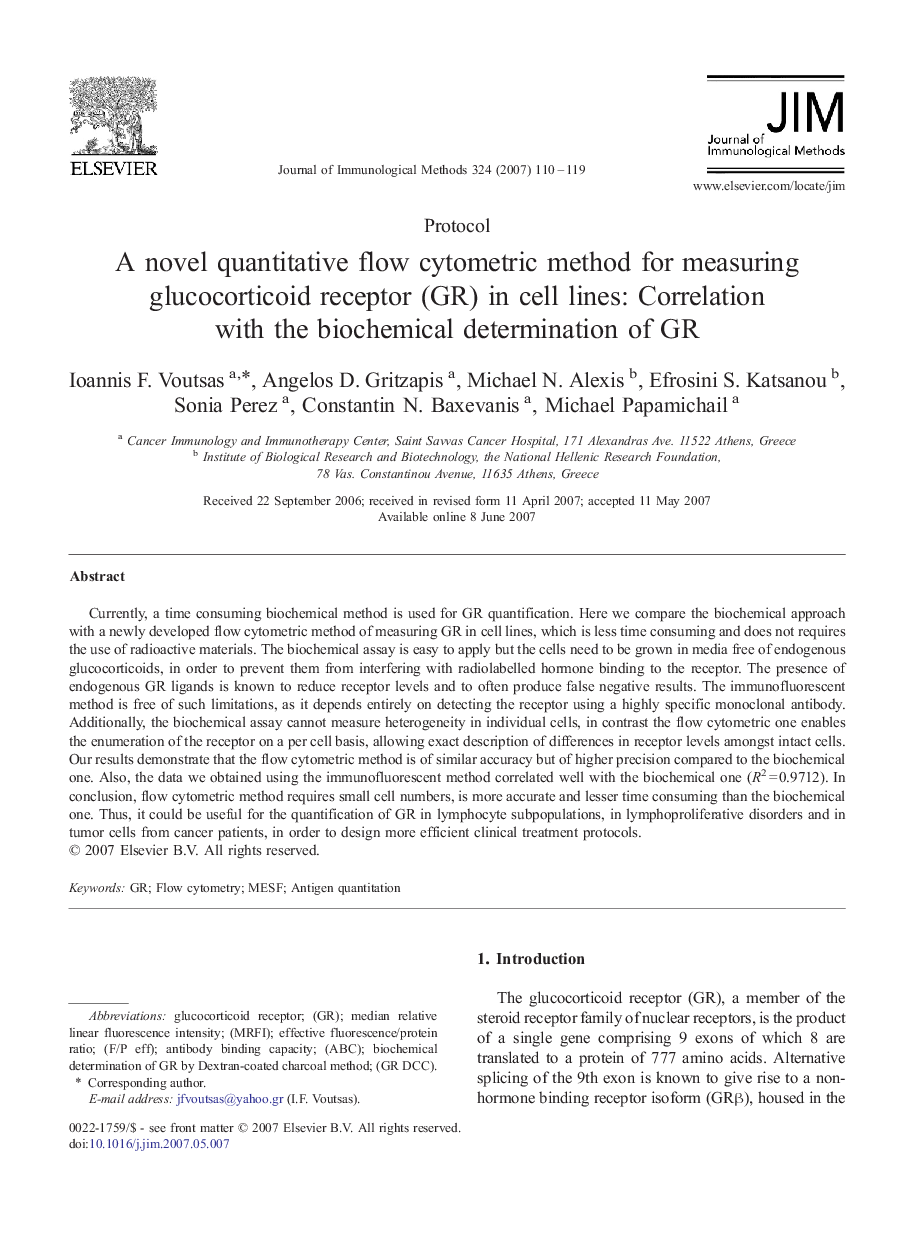| Article ID | Journal | Published Year | Pages | File Type |
|---|---|---|---|---|
| 2089066 | Journal of Immunological Methods | 2007 | 10 Pages |
Currently, a time consuming biochemical method is used for GR quantification. Here we compare the biochemical approach with a newly developed flow cytometric method of measuring GR in cell lines, which is less time consuming and does not requires the use of radioactive materials. The biochemical assay is easy to apply but the cells need to be grown in media free of endogenous glucocorticoids, in order to prevent them from interfering with radiolabelled hormone binding to the receptor. The presence of endogenous GR ligands is known to reduce receptor levels and to often produce false negative results. The immunofluorescent method is free of such limitations, as it depends entirely on detecting the receptor using a highly specific monoclonal antibody. Additionally, the biochemical assay cannot measure heterogeneity in individual cells, in contrast the flow cytometric one enables the enumeration of the receptor on a per cell basis, allowing exact description of differences in receptor levels amongst intact cells. Our results demonstrate that the flow cytometric method is of similar accuracy but of higher precision compared to the biochemical one. Also, the data we obtained using the immunofluorescent method correlated well with the biochemical one (R2 = 0.9712). In conclusion, flow cytometric method requires small cell numbers, is more accurate and lesser time consuming than the biochemical one. Thus, it could be useful for the quantification of GR in lymphocyte subpopulations, in lymphoproliferative disorders and in tumor cells from cancer patients, in order to design more efficient clinical treatment protocols.
